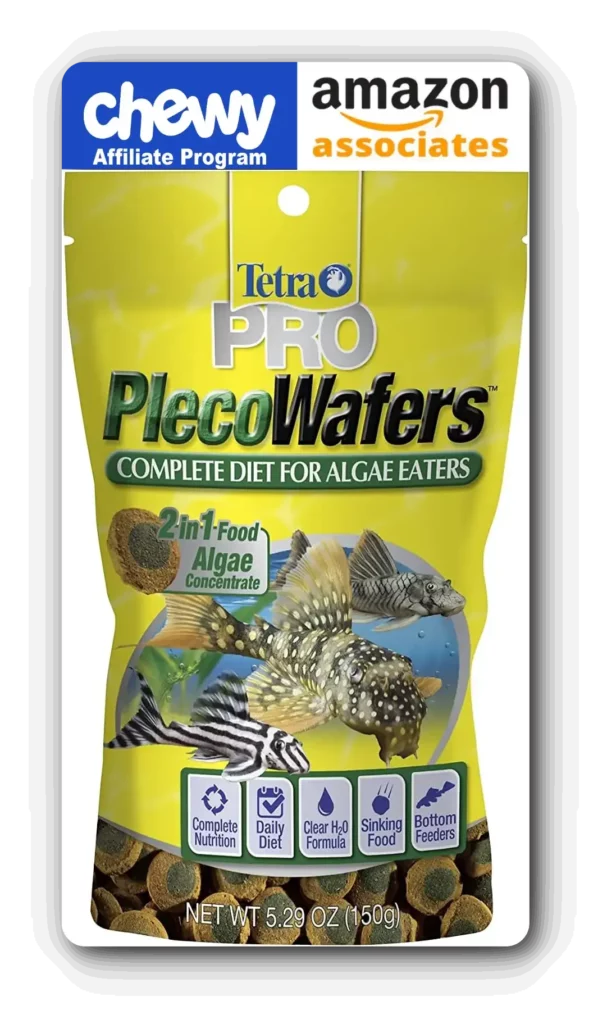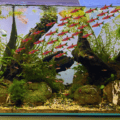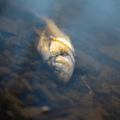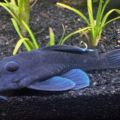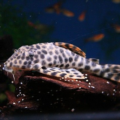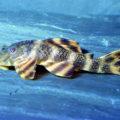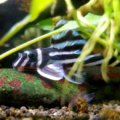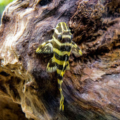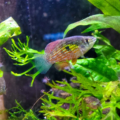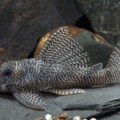Get lost in the celestial patterned appearance of Hypancistrus sp. L136, learn actionable maintenance tips for its overall health. This is a complete guide for beginners and pros.

Introduction
Angelicous Pleco, scientifically called Hypancistrus L136, is a worthy centerpiece fish if you’re looking for a long-term beautiful underwater companion.
This small sized Plecostomus fish comes in a unique dark black color with bright spots that appear like a starry night.
Besides its stunning appearance, Angelicus Pleco care is so straightforward that you’d enjoy the next 8 – 10 years with this long-living companion in your tank.
Whether you’re a beginner or an expert aquarist, this Hypancistrus L136 guide is all you need to successfully keep as many of this species as you desire. You’ll learn what this starry freshwater fish eats, how it lives, its companions, and reproduction tips.
Let’s start!
The Unique Appearance of Angelicus Pleco
You can identify this spotted Hypancistrus species through its scale coloration, size, personality, and overall physical features.
Color Pattern

This ornamental freshwater pleco has a 3.1 inches or 7.9 cm body covered in dark black or deep brown scales with contrasting white or yellowish spots. The combination of these dark and bright colors creates a celestial pattern that highlights every aquarium with its visual appeal.
Unique Traits
Other unique traits you can use in identifying Angelicus Pleco include its robust body, long pectoral fins, wide suckermouth, and calm temperament. These traits make this catfish an ideal addition to community tanks in need of peaceful companions.
See Also: Pitbull Pleco (Parotocinclus jumbo): The Perfect Algae Cleaner for Compact Aquariums
Setting Up the Ideal Tank for Angelicus Pleco
It’s time to build the ideal Angelicus Pleco tank setup. You must first note that creating a suitable tank environment for Plecos must have hiding spots, soft water and a steady current.
See the specifics below:
Tank Size and Layout
I recommend a wide tank that holds 20 gallons of water and has enough space to add caves, plants for shelter and hiding, and decorative pieces to make the aquarium look like its natural habitat.
Water Parameters
| Ideal Temperature | 75 – 86℉ |
| pH Level | 6 – 7.5 |
| Hardness | Soft to Moderately Hard |
Substrate and Decor

Hypancistrus sp. L136 needs a smooth substrate with a natural aquascape to mimic a freshwater Pleco habitat. Use fine sand or smooth gravel for the tank’s floors, then create hiding spots with driftwood, rocks, and plants.
Install low LED lighting with a timer to accommodate your Angelicus Pleco’s nocturnal trait. Following this Hypancistrus aquarium guide gives your pets a chance at a long, happy, and healthy life. It’s time to learn about their feeding, breeding, and preferred tank mates.
Feeding Angelicus Pleco: Balanced Nutrition for Vibrant Health
The appropriate diet for Hypancistrus species is a mix of plant-based foods and animal matter as supplements. They especially prefer protein-rich diets, which is why they eat specialized commercial food like Tetra Pro PlecoWafers, pictured above.
Diet Suggestion
Other staple foods for Angelicus Plecos are bloodworms, brine shrimp, algae wafers, and occasional blanched vegetables as supplements. Balancing their omnivorous food needs ensures all-round distribution of necessary nutrients.
For more on feeding your aquatic pets check out The Ultimate Guide to Fish Food: Pros and Cons & Best Choices!
Feeding Tips
Here are some specific nocturnal pleco-feeding tips for adapting to their sleep patterns:
- Feed them from evening to night when they’re most active
- Give them small portions they can finish within an hour
- Remove uneaten food from the water
Feeding Angelicus Pleco with a strict regimen reduces the risk of overfeeding and water contamination.
Tank Mates for Angelicus Pleco: Building a Harmonious Community
Angelicus Plecos, particularly Hypancistrus variants, are a peaceful freshwater aquarium species. They should share a tank with non-aggressive fish that may outcompete or stress them.
Choose tank mates for Angelicus Pleco based on their environmental needs, size, and temperament. So, compatible fish for Hypancistrus using these metrics include:
| Quality | Fish type |
| Peaceful Top/Mid-Dwellers | Rasbora, Small Tetras, or other small freshwater fish |
| Bottom-Dwellers | Corydora Catfish, Loaches |
| Similar Environmental Needs | Angelfish |
Avoided species include aggressive and territorial species like Oscars, Flowerhorns, and other plecos that will bring out their territorial nature. Are you in love with these fish already and want more of them?
Breeding Angelicus Pleco: Challenges and Rewards
Breeding Angelicus Pleco in captivity isn’t as complex as you imagine. You can reproduce Angelicus Plecos if you’re willing to face a few challenges head-on! All you need to do is set specific water conditions, build caves for spawning, and spend time in fry care.
Breeding Setup
Plecos need large breeding tanks fitted with caves for successful Hypancistrus L136 spawning. Also, ensure there’s soft water with a controlled temperature of 78 – 82℉ and a pH level between 6.5 and 7.5.
Reduce water hardness and feed your pets protein-rich foods to prepare their bodies for spawning. The females will lay their eggs, which will hatch within a week and 10 days.
Fry Care
Upon hatching, move your pet fry to a grow-out tank or adjust the breeding tank for fry development. Fry care for Plecos mainly focuses on feeding. Young Hypancistrus need more food than mature ones, so increase feeding time and frequency.
Give them powdered foods or specialized fry pellets to ensure healthy development.
Lifespan of Angelicus Pleco: Tips for Long-Term Care

Keeping an Angelicus Pleco is a long-term commitment because with proper care, consistent water conditions, and a balanced diet, they will live up to 8 – 10 years.
Lifespan Factors
Following this review from the beginning is already a comprehensive Agelicus Pleco lifespan guide.
You’ll notice that the healthy pleco maintenance tips highlighted cover water quality, diet, and stress-free living conditions. The difference between a long life in good health and early death starts with their environment, food, and companions.
Care Tips for Longevity
You must practice regular maintenance and observe behavioral patterns for early signs of health issues as long-term Hypancistrus care.
Preventing Health Issues in Angelicus Pleco
You now know the secret to maintaining healthy Hypancistrus species, but they can still face common health issues from poor nutrition, stress, and water quality fluctuations. Luckily for your pets, this guide contains actionable tips for preventing Pleco diseases.
Preventative Measures
Here’s a summary of the best preventative health care:
- Maintain stable water parameters
- Change 20 – 30% of the tank water weekly
- Avoid overcrowding your tank or pond
- Avoid overfeeding or underfeeding your pets
- Use proper filtration to maintain pristine water
Signs of Illness
Despite practicing preventative Angelicus Pleco health care, still look out for symptoms like lethargy, faded colors, and unusual swimming patterns. They’re the earliest and most obvious signs of illness in your pets.
- Lethargy: Ease stress by changing the tank mates to compatible species
- Faded Colors: Ich (White spot disease) or Fin Rot from bacterial infection to be treated with specific meds and increased water temperature.
- Unusual Swimming Patterns: Stress can be eased with a better diet and improved water quality.
Conclusion
As we conclude this Angelicus Plecos care guide, you’ll agree that it contains useful Hypancistrus tips for beginners and professional aquarists alike.
I’ll go over the care essentials for Angelicus Plecos one last time so you can preserve its stunning celestial appearance and peaceful temperaments.
- Replicate its natural habitat for the best results.
- Feed them a balanced omnivorous diet.
- Only pair your Plecos with compatible species.
That’s the end of this comprehensive freshwater Pleco aquarium guide; you can now start your school of Hypancistrus species. Good luck!

